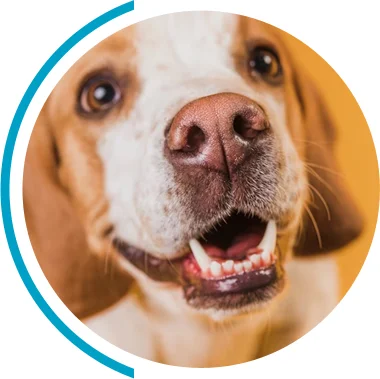Training a scared dog can be a challenging yet rewarding process. Many dog owners in Santa Clara face situations where their pets exhibit fear or anxiety, often impacting their overall behavior and quality of life. This article explores various aspects of understanding and addressing fear in dogs, the role of professional trainers, effective training techniques, home training strategies, and how to maintain progress.
Fear is a natural emotion that dogs experience, much like humans. Understanding the root causes of fear can help owners address their pet’s issues more effectively. Fear can manifest from various sources, including social experiences, environmental factors, and past trauma.
Several elements can lead to a fearful disposition in dogs. Some of the most common causes include:
Recognizing these triggers is crucial in catering a training program that addresses each individual dog’s fears. For instance, a dog that has experienced neglect may react fearfully to sudden movements or loud voices, while another dog may be particularly sensitive to the presence of other dogs due to a past encounter. By identifying these specific triggers, owners can create a more tailored approach to training and socialization, ensuring a safer and more comfortable environment for their pets.
Fearful dogs may exhibit a range of behaviors indicating they are uncomfortable in specific situations. Key signs to watch out for include:
Understanding these signs will equip owners to respond appropriately and initiate a training plan that helps their dogs feel safe and secure. Additionally, it is important to note that some dogs may display more subtle signs of fear, such as avoiding eye contact or licking their lips. Being aware of these less obvious behaviors can help owners intervene before a dog’s fear escalates into a more severe reaction. By fostering a supportive environment and employing positive reinforcement techniques, owners can gradually help their dogs build confidence and reduce their fear responses over time.
Professional dog trainers play a significant role in helping scared dogs overcome their fears. Their expertise can create a structured environment where dogs learn to develop healthy coping mechanisms.
Trainers employ various techniques tailored to each dog’s specific needs. By assessing the individual dog’s behavior and fear triggers, trainers can implement personalized training plans. These plans often include methods for exposure to fears, positive reinforcement, and building a safe space for the dog.
Additionally, trainers educate owners on how to support their dogs throughout the training process and encourage consistent, positive interactions.
When searching for a dog trainer in Santa Clara, there are a few key factors to consider. First, prioritize trainers who specialize in anxiety and fearful dog behavior. Look for:
Trial classes or initial consultations can also help determine if the trainer is a good fit for your dog’s needs.
Effective training techniques can dramatically improve a scared dog’s behavior and demeanor. Among the most recommended methods are positive reinforcement training and desensitization techniques.
This method focuses on rewarding desired behaviors rather than punishing undesired ones. Positive reinforcement can involve treats, praise, or playtime when the dog exhibits calm behavior in the presence of fear triggers.
Over time, this approach helps dogs associate their fears with positive outcomes, creating more confidence and acceptance in challenging situations.
Desensitization involves gradually exposing dogs to their fears at a level that is manageable for them. This process is paired with counterconditioning, where the dog learns to expect something positive in response to a previously feared stimulus.
For example, if a dog is afraid of loud noises, the training may begin with playing a recording of the sound at a very low volume while providing treats. Over time, the volume can be increased as the dog becomes more comfortable.
Home training is an essential aspect of helping scared dogs adjust and feel secure. By creating a supportive and nurturing environment, owners can significantly influence their dog’s progress.
A safe space is vital for a fearful dog. Designate a quiet area in your home where your dog can retreat when feeling anxious. This area should be free from loud noises, startling movements, or chaotic activities.
Including comfortable bedding, toys, and familiar scents can encourage your dog to use this space as a refuge, helping them feel more secure during stressful moments.
Establishing trust is foundational in training scared dogs. This can be achieved through calm, consistent interactions, along with allowing your dog to approach you at their own pace. Avoid forcing your pet into situations that cause fear, as this can worsen their anxiety.
Spend quality time engaging in low-stress activities, like gentle play or short walks, and recognize your dog’s needs for space and autonomy. Over time, this approach will foster a healthy bond and encourage your dog’s confidence.
Continual support and proactive practices are essential to maintaining the progress made during training. Fearful dogs often require ongoing management to prevent relapses.
Being consistent with commands, reactions, and training routines is critical. All family members should be aligned with training techniques to avoid confusing the dog. Regular reinforcement of positive behavior and retraining stressed behaviors will ensure your dog retains progress and learns new skills.
It’s also important to recognize that setbacks may happen. A single negative encounter shouldn’t derail the overall training; instead, adjust strategies as needed and continue reinforcing the positive behaviors.
If a dog’s fear persists or worsens, seeking professional help may be necessary. Certain cases may require specialized behavioral therapy or veterinary intervention.
A qualified trainer or veterinary behaviorist can provide additional techniques or coping strategies tailored to the dog’s unique situation, ensuring a higher chance of a successful outcome.
In conclusion, understanding and addressing fear in dogs, especially those in Santa Clara, involves a combination of patience, training, and support. By employing the right techniques and seeking professional assistance when necessary, dog owners can help their pets lead more confident and happier lives.
If your beloved canine companion in Santa Clara is struggling with fear or anxiety, remember that you’re not alone. At The Grounded Hound Canine Coaching, we understand the challenges you face and are here to offer our expertise. With a CTC from the Academy for Dog Trainers, an ABCDT from the Animal Behavior College, and specialized certifications in Separation Anxiety, we’re equipped to provide the support and guidance you need. Our approach is grounded in Patience, Kindness, and Consistency, ensuring that every step we take together builds a stronger bond between you and your dog. Don’t let fear stand in the way of a happy, confident pet. Contact Us Today and let’s embark on this transformative journey together.

